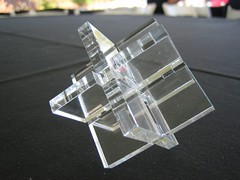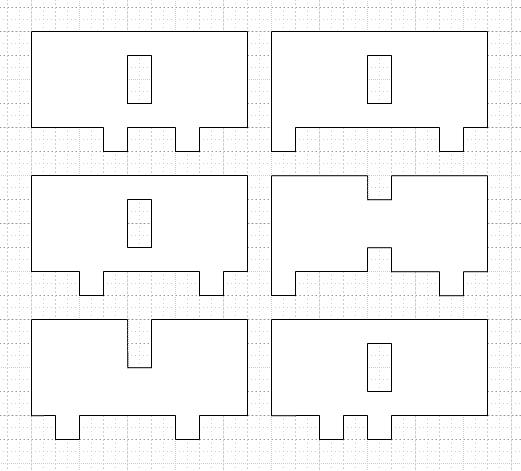My new puzzle
After collecting some 90 new puzzles in the IPP 25 puzzle exchange, and maybe another dozen at the puzzle party the next day, you'd think I'd be pretty well saturated with puzzles to play with, and that's true. So what makes this one (additional) new puzzle so cool? Well, there's a story behind that.
Six years ago, I attended my first ever International Puzzle Party, at a hotel near Heathrow Airport in London. (How I finally found out about, and got invited to, IPP is another story.) One of the several great organized excursions that year was a trip to the country manor home of Edward Hordern, who at the time had one of the two or three largest puzzle collections in the world. (Sadly, Edward died less than a year later. Now, the annual puzzle exchange is named in his honor.)
Edward's home, Cane End, was very large and he'd arranged for a huge tent to be set up in the "front yard" to house the tables for lunch and other activities. On each table, there were a few items from his vast collection of something like 25,000 puzzles. A copy of the puzzle shown in the picture, made from water-jet-cut Baltic birch plywood, was one of those. Given the materials and workmanship, it was probably from one of the Finnish contingent.
I couldn't solve it in the brief time I had with it there, so I jotted down the design on the back of a deposit slip from my checkbook, and it sat like that in my wallet for six years. A few months ago, I finally got around to transferring the design into Visio, in preparation for getting it laser cut by my local neighborhood sign maker, but never actually got it done.
Last weekend, at Foo Camp, the folks from Squid Labs had brought both a cutter and some 1/4" Lucite, and they announced Saturday night that they'd be cutting or etching whatever people wanted. I had my laptop with me, and the design was all ready to go, so how could I resist? It was pretty cool watching it do the cutting, seeing a sheet of plastic turn into an interesting puzzle in just a few minutes. Very cool.
I don't know who originally designed this puzzle. If, by chance, you do, please let me know so I can thank them myself. Happily, it turns out to be quite a nice little puzzle.
In case you're interested, my copy of the design appears to the left. The smallest feature size should be equal to the thickness of the material you're using. In my case, it's 1/4" of an inch, which was the thickest acrylic the Squid Labs folks had at the time. For those of you with Microsoft Visio, here's the original design file.
Update on 8/31: More copies of the design file, in DXF format and DWG format. You're welcome, Andy.

